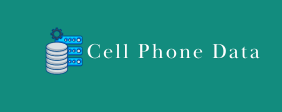Especially when it comes to CSS photos. Choosing the right format can make all the difference in the visual quality and performance of your site.
To ensure your images look their best, it’s important to consider the type of file you’re using. The most common formats are JPG , PNG , and GIF . Each has its own specific features and uses.
The JPG format is ideal for photographs and other
Types of complex images with many different colors. It offers lossy compression that can reduce file size without compromising visual quality too much.
– On the other hand, PNG is great for images. Image format with transparent areas or sharp details, such as logos or graphics. It offers higher quality than JPG, but can result in larger files.
– Finally, the GIF format is often used for simple images, short animations or basic graphic elements. It has the advantage of supporting animations and transparency, but its limited colour palette makes it less suitable for detailed photographs.
When choosing the right image format whatsapp number list for your CSS photos, you need to consider factors such as the visual quality you want to maintain, the resulting file size, and compatibility with different browsers and devices. Optimize your images and make your website stand out!
What will you find in this article?
Best Image Formats for Photos in HTML and CSS: Complete Guide
Ultimate Guide to Image Size in CSS
Tips for successfully positioning an image in CSS
Related posts:
Best Image Formats for Photos in HTML and CSS: Complete Guide
In the context of web design, choosing the in the hospitality industry right image format for photos is a crucial aspect to consider. When working with HTML and CSS, it is crucial to select formats that not only maintain the visual quality of the images but also optimize. Image format page performance. Below are some of the best image formats for photos in HTML and CSS, along with recommendations on when to use each of them:
JPEG (Joint Photographic Experts Group) format: This cl lists format is ideal for photographs with smooth gradients and a wide range of colors. JPEG images are compressed without losing much visual quality, making them perfect for realistic, detailed photographs.
